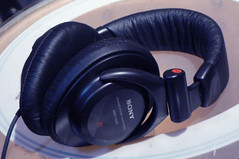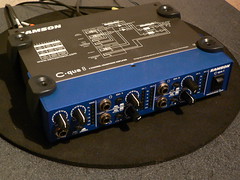B. Thomas Cooper - Editor
It’s only Tuesday, and already, it’s been quite a week. I have been working away on a monologue I am set to deliver this Saturday at Flower Street Station in Phoenix.
As you might guess, listening to a monologue and delivering a monologue are quite different, and composing this first monologue has not proven a simple task. For several days now, I have shouldered the burden of great anxiety over the content, you know, just trying to find the right words to share on such a momentous occasion.
In fact, it has begun to adversely effect my sleep to the point where I am experiencing nightmares. Usually I don’t recall my dreams, but one in particular continues to haunt me.
In this dream, I’m sitting in the front row of what begins as a typical show here at Flower Street station, but then suddenly morphs into a large, exquisite auditorium, complete with orchestra pit, and an entire orchestra, with a pair of cellists sitting just below me, perhaps no further than three or four feet away. In this dream, I am so close to the musicians, I can see the eyes as they follow along with the dots on the sheets of music before them, strange, as I should have been staring at the backs of their heads. May I remind you, it was, of course, only a dream.
On stage is a large, pearl white grand piano. Playing that piano is none other than singer, songwriter, Marc Cohn, known primarily for his one big hit, Walking in Memphis released back in 1991. In fact, Mr. Cohn is performing a rather moving rendition of Walking in Memphis, and is just about to admit to being a Christian of convenience, when out of the blue, in swings Terrible Ted Nugent, high above the crowd, one hand grasping a rope, the other a cross-bow. Terrible Ted is quite old in my dream. He appears to be in his late seventies, perhaps older. Like many his age he has little body fat… he is all skin and muscle, and he is wearing nothing more than a deer skin G-string and a camouflage-colored military style beret that makes him appear as though he is wearing camel genitalia on his forehead. It is not a pretty sight, mind you, and it’s about to get downright ugly.
Just as the song is reaching it’s dramatic crescendo, Ted aims with precision, discharging his trusty cross-bow. Ted, as you know, is a master marksman and bow hunter. He scores a direct hit, striking Mr. Cohn in the center of his heart, which explodes on impact, sending a stream of blood gushing onto the pearl white grand piano, and covering the nearly naked Nugent. As Ted reaches up to wipe the blood from his eyes, he looses grip of the rope and falls into the orchestra pit below, impaled on a cello. There he lies, obviously mortally wounded, poked through the middle like a shish kabob.
I react as any man would. I lean over the orchestral pit, and I ask the mortally impaled Ted if he is alright. Of course, he isn’t alright, and I believe he would have said as much if he hadn’t been so delirious. Ted is in shock now, and his time on this Earth slipping away. Again, I speak to the dying man, asking if he has any last words before moving on to that great used car lot in the sky. He looks at me with a kind of a look only a nearly dead Ted Nugent can conjure up, and with his final breath, mutters the words,,, Harry Bedurchy.
Harry Bedurchy, and then he just slumps back on the cello and dies. Harry Bedurchy, I repeat, as the house lights come on and the crowd begins to shuffle out. Harry Bedurchy, indeed, and with that I awakened from my dream. Even now, I have no idea what may have prompted this nightmarish scenario. I can only wonder.
Well, I suppose it’s time to wrap up this, my first of monologues. I hope you’ve enjoyed it, and I hope the next time you hear the song Walking in Memphis, you think of an aged Ted Nugent sporting camel genitalia. I know I will. Good night everyone. Oh and by all means, Harry Bedurchy.
Brad
B. Thomas Cooper - Editor
Sound and Recording - Sound Foundation - National Newswire - The Infinite Echo - Impeachment Now! - Skate the Razor -
Skate the Razor Blog - blogment




















